Norman England 1066 – circa 1300 The future

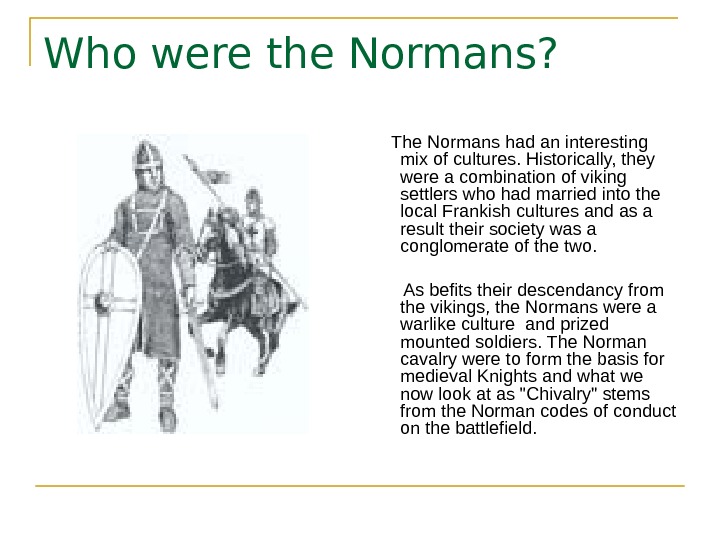



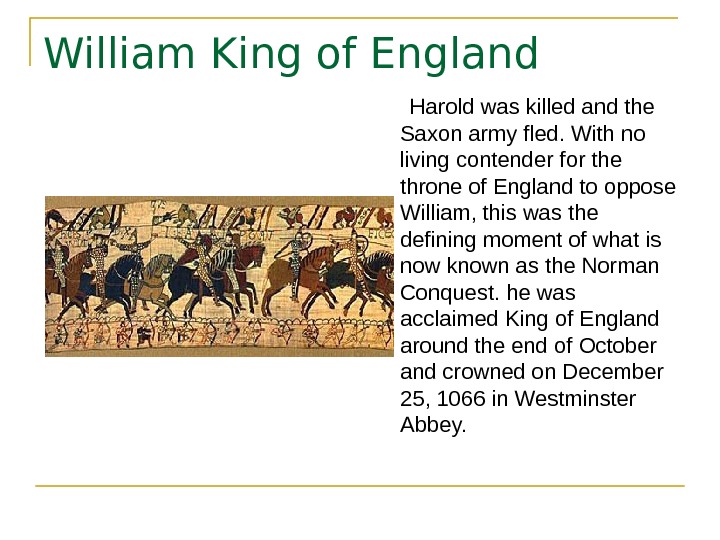

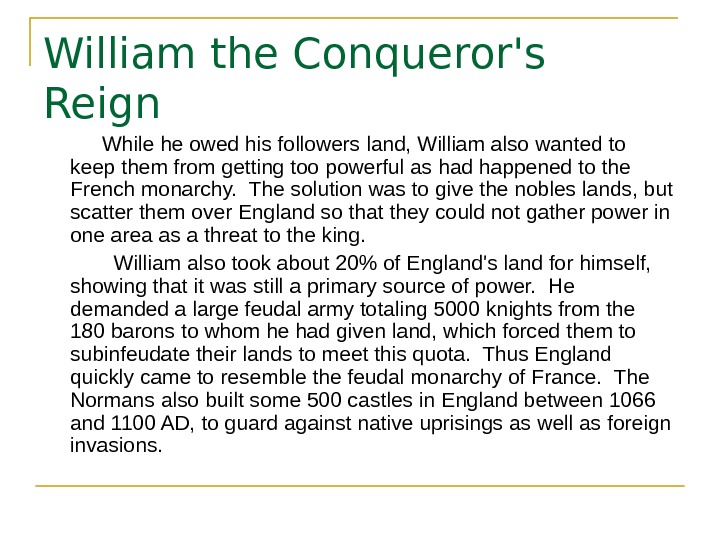
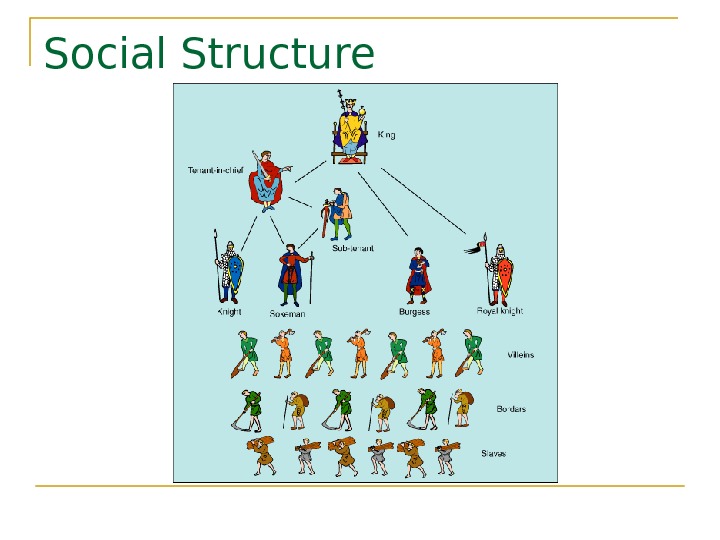
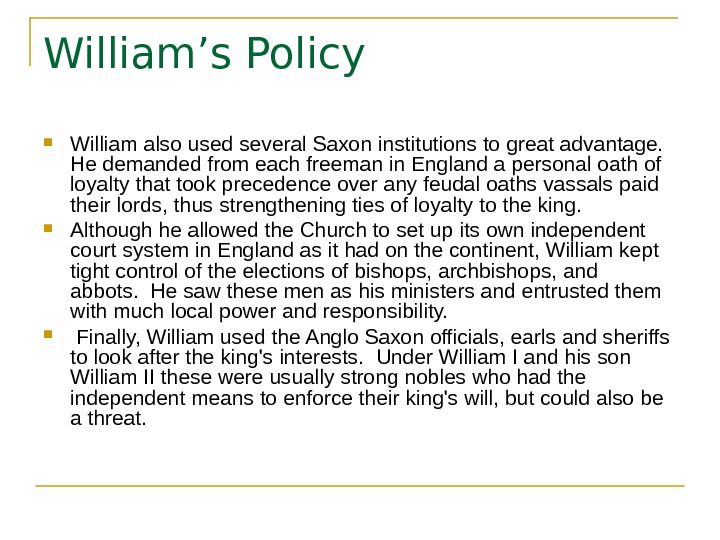
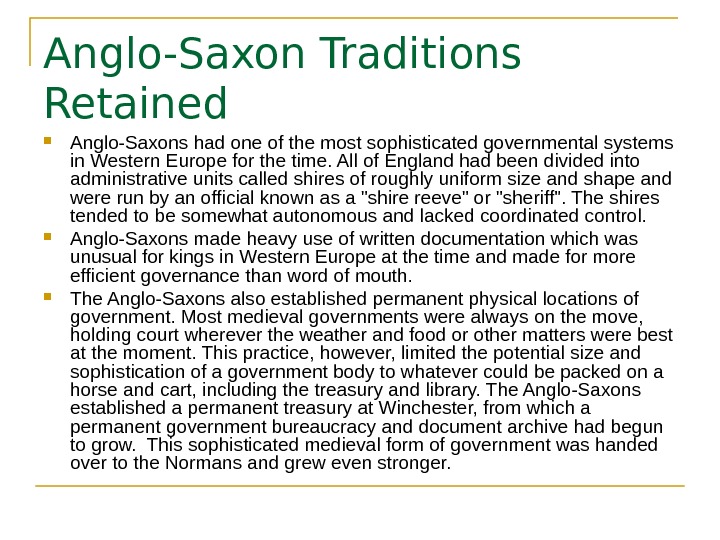
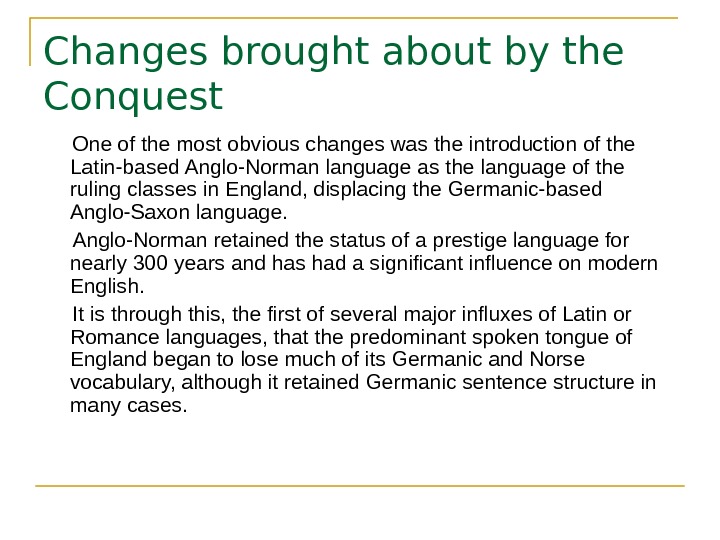
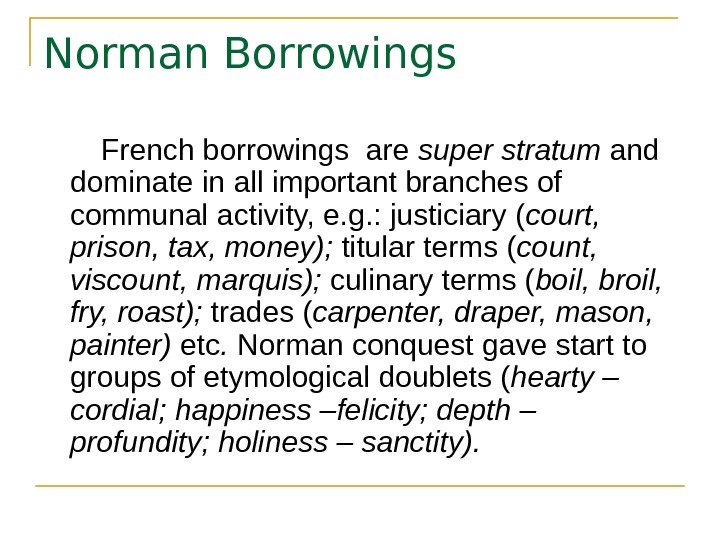
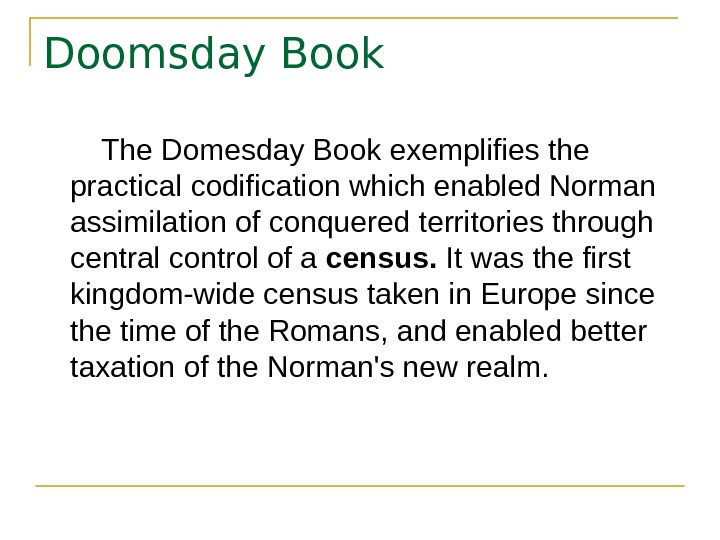
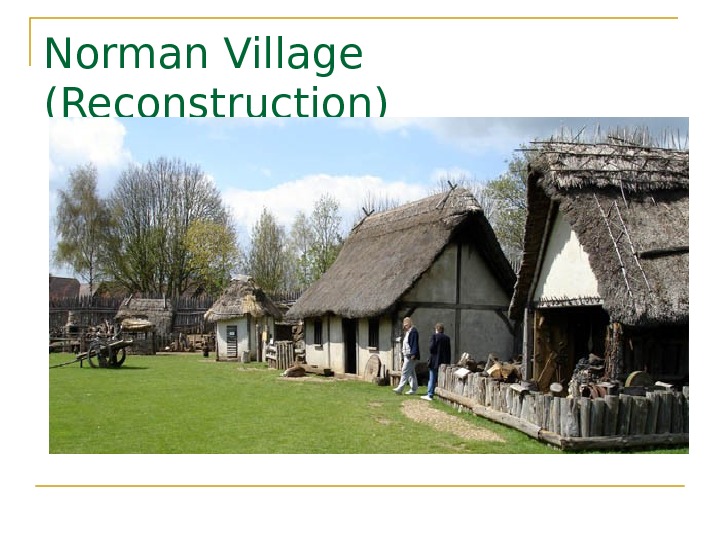


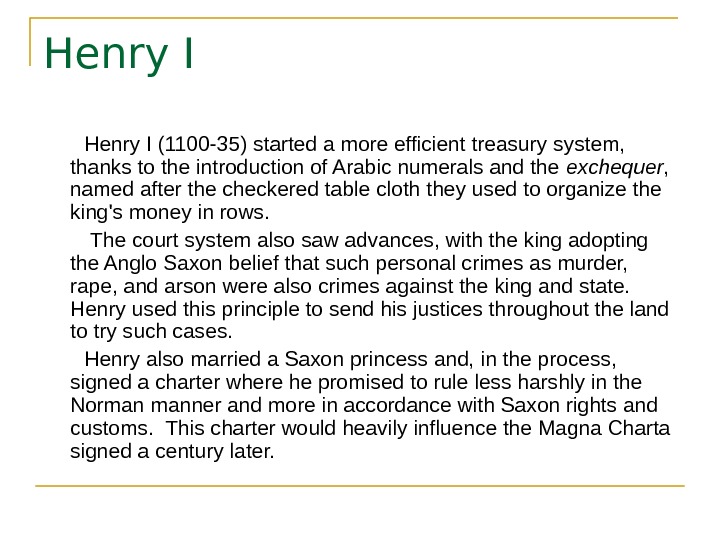
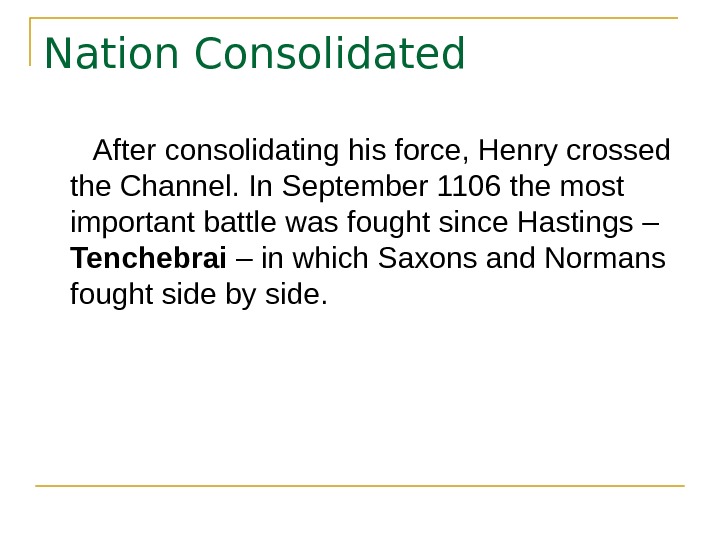
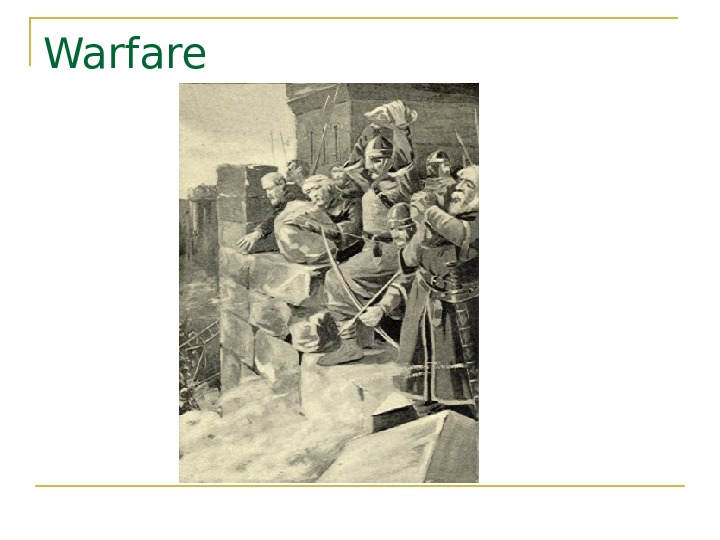


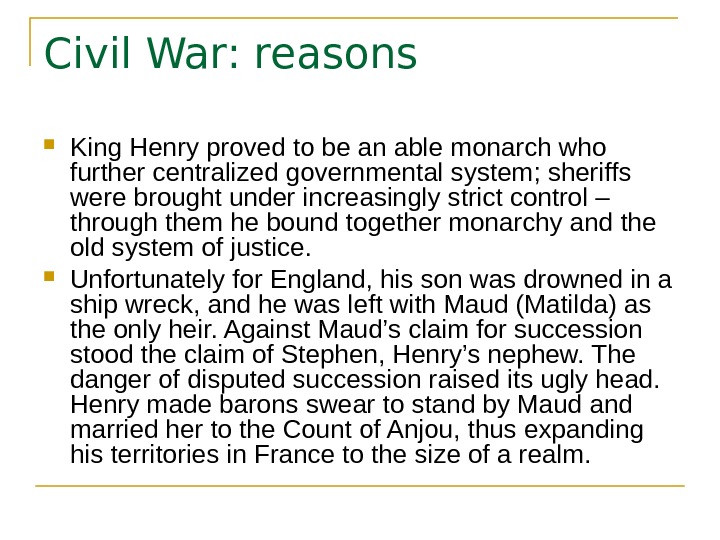
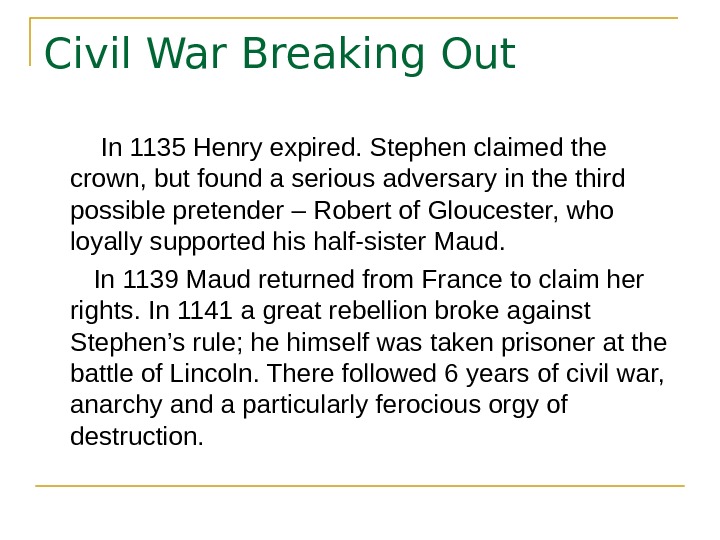
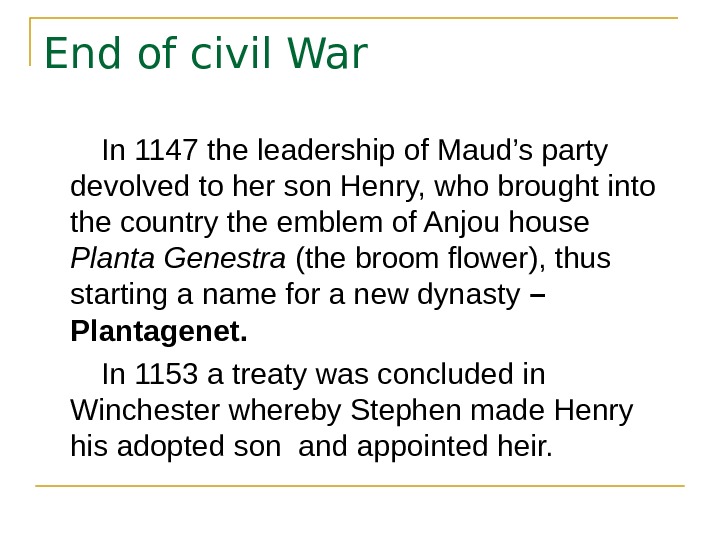
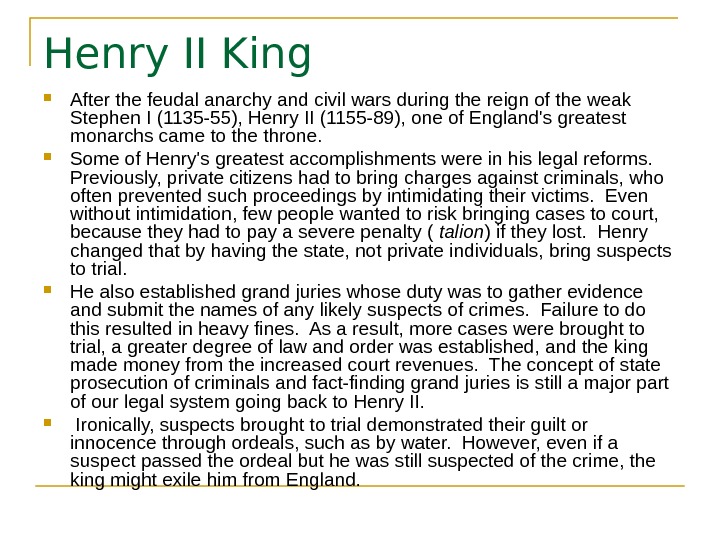
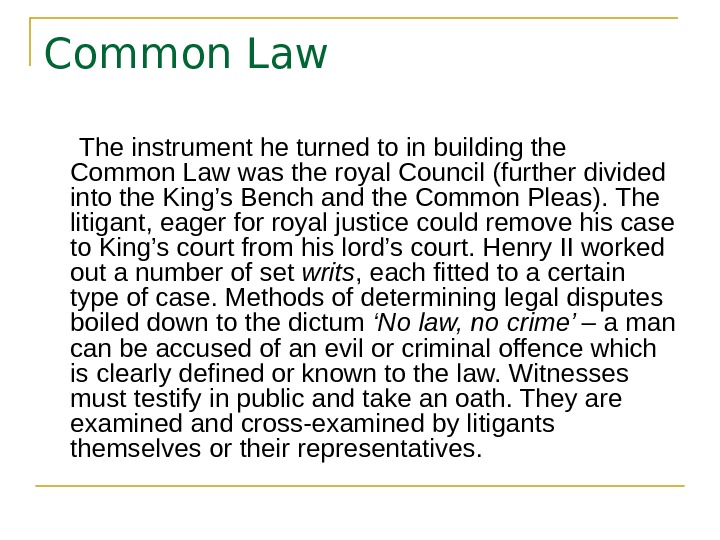
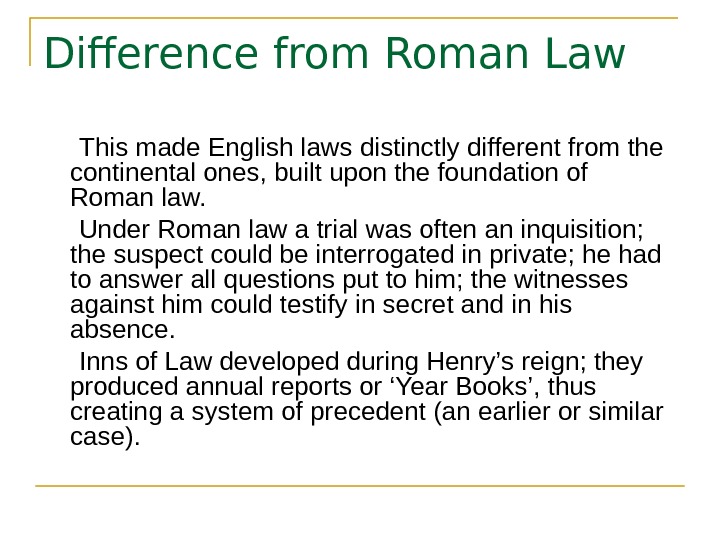
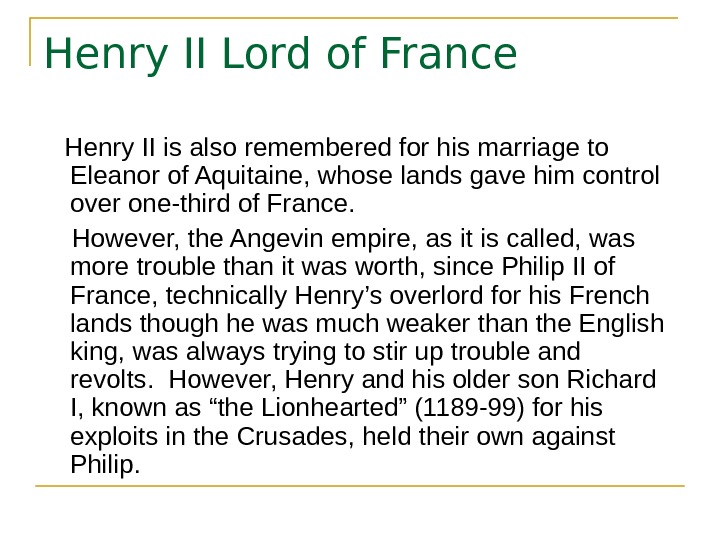

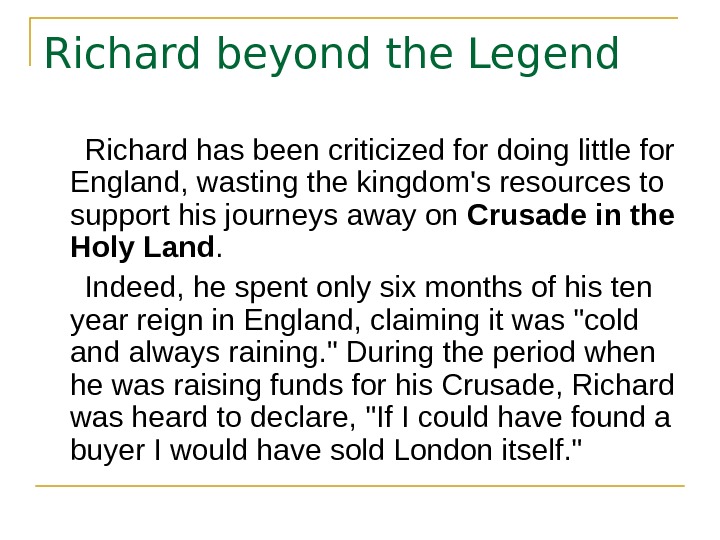
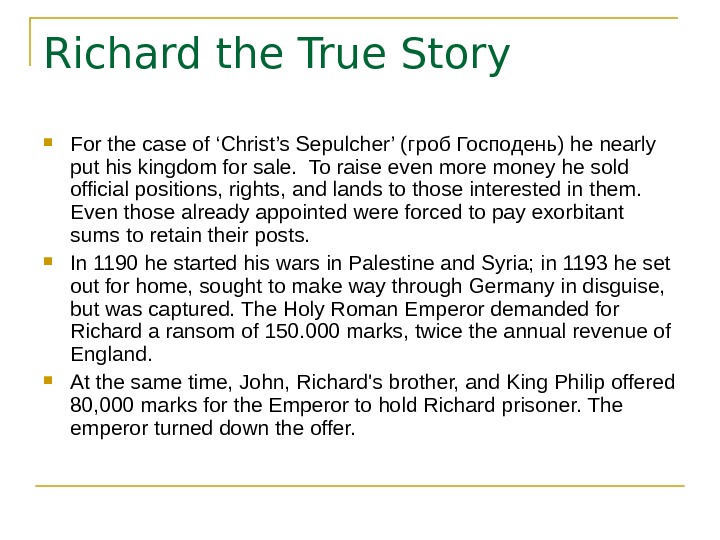
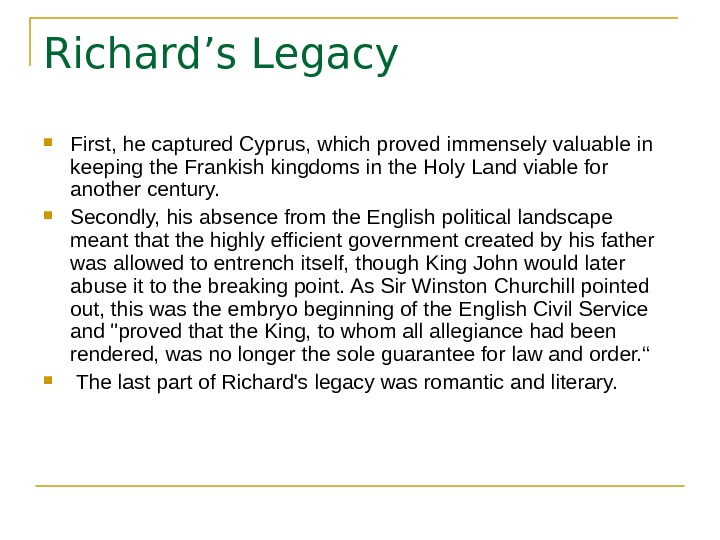

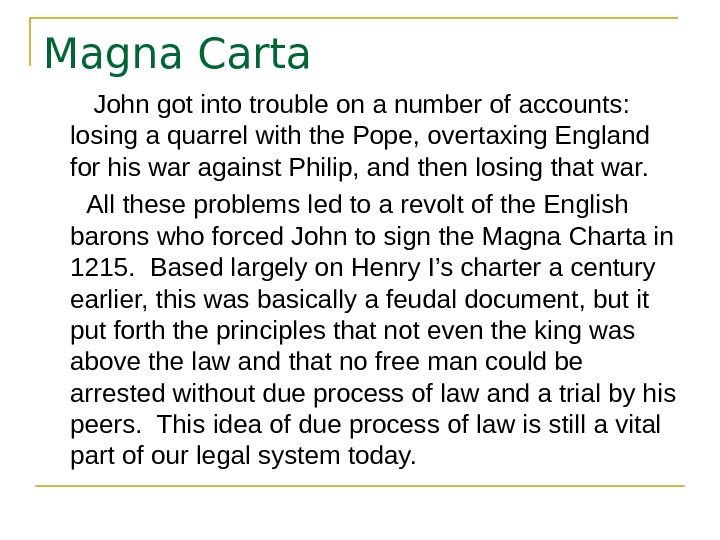

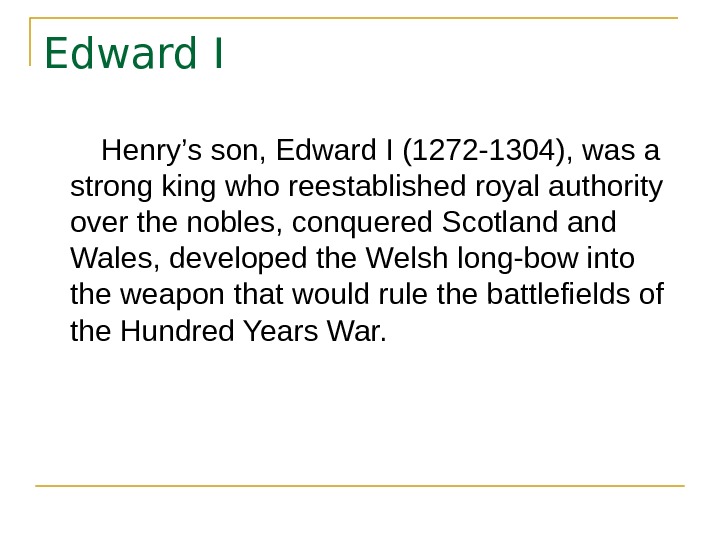
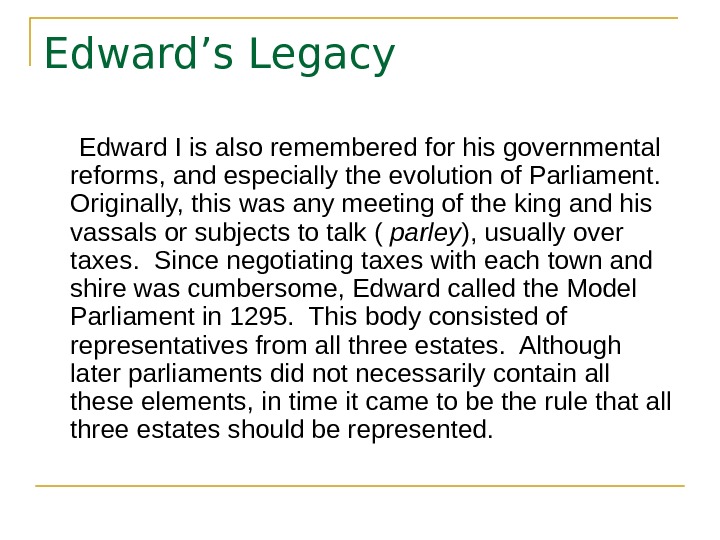
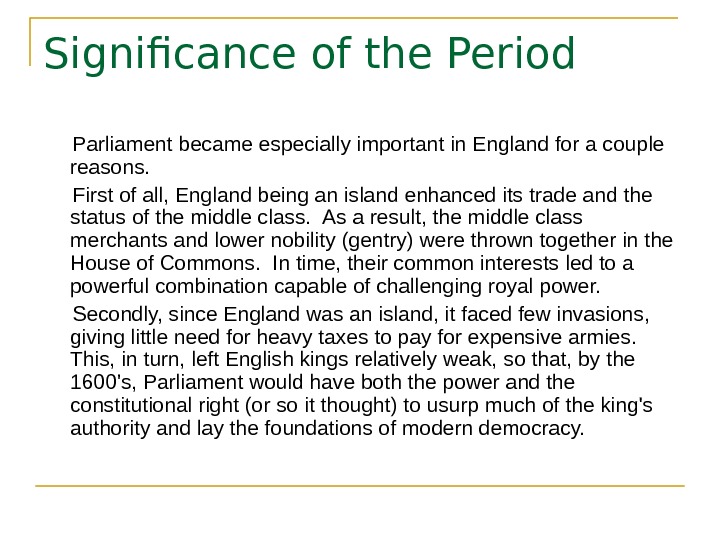
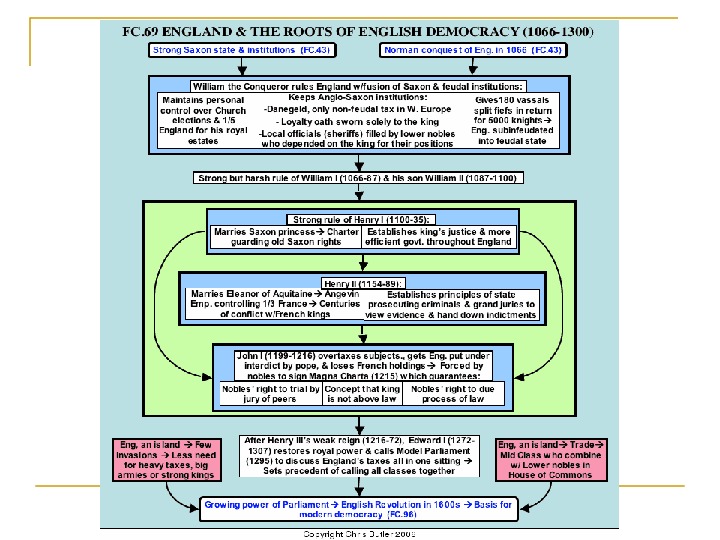
- Размер: 2.1 Mегабайта
- Количество слайдов: 40
Описание презентации Norman England 1066 – circa 1300 The future по слайдам
 Norman England 1066 – circa 1300 The future of the Isles took a major change. For hundreds of years to come, it would be embroiled in wars in Europe and the Holy Lands. Civil unrest would be rife and the once proud traditions of the Saxons would be ground under the stone of a network of castles that covered the country…
Norman England 1066 – circa 1300 The future of the Isles took a major change. For hundreds of years to come, it would be embroiled in wars in Europe and the Holy Lands. Civil unrest would be rife and the once proud traditions of the Saxons would be ground under the stone of a network of castles that covered the country…
 Who were the Normans? The Normans had an interesting mix of cultures. Historically, they were a combination of viking settlers who had married into the local Frankish cultures and as a result their society was a conglomerate of the two. As befits their descendancy from the vikings, the Normans were a warlike culture and prized mounted soldiers. The Norman cavalry were to form the basis for medieval Knights and what we now look at as «Chivalry» stems from the Norman codes of conduct on the battlefield.
Who were the Normans? The Normans had an interesting mix of cultures. Historically, they were a combination of viking settlers who had married into the local Frankish cultures and as a result their society was a conglomerate of the two. As befits their descendancy from the vikings, the Normans were a warlike culture and prized mounted soldiers. The Norman cavalry were to form the basis for medieval Knights and what we now look at as «Chivalry» stems from the Norman codes of conduct on the battlefield.
 Invasion Started In December 1065, the Saxon king, Edward the Confessor, whose excessive piety is said to have prevented him from producing any heirs to the throne, died. William, Duke of Normandy, had a legitimate claim to the throne as Edward’s cousin, but the Saxon nobles chose Harold of Wessex instead. For William, there was only one response: take the crown by force. He gathered an army of some 5000 knights and infantry, promising his followers land in England. He also was armed with a papal blessing and banner, partly because of the Norman dukes’ policy of liberally endowing the Church with lands and partly because the Pope wanted to bring the somewhat independent Saxon clergy more into line with current Catholic practices.
Invasion Started In December 1065, the Saxon king, Edward the Confessor, whose excessive piety is said to have prevented him from producing any heirs to the throne, died. William, Duke of Normandy, had a legitimate claim to the throne as Edward’s cousin, but the Saxon nobles chose Harold of Wessex instead. For William, there was only one response: take the crown by force. He gathered an army of some 5000 knights and infantry, promising his followers land in England. He also was armed with a papal blessing and banner, partly because of the Norman dukes’ policy of liberally endowing the Church with lands and partly because the Pope wanted to bring the somewhat independent Saxon clergy more into line with current Catholic practices.
 Battle of Hastings The Battle of Hastings (10/14/1066) pitted mounted medieval knights against the Saxon infantry drawn up in a shield wall on the crest of a ridge. Frontal assaults by Norman knights, infantry, and archers could not make a dent in the shield wall. Norman trickery could. Feigning retreat, the Norman knights drew groups of Saxons out of formation, surrounded them, and wiped them out. Being weakened several times by this tactic, the Saxon army then came under a barrage of arrows and one final charge of Norman cavalry that won the day. This gave William the crown and the title «the Conqueror», which was much more appealing than his previous nickname «the Bastard». Never since has England fallen to foreign conquest.
Battle of Hastings The Battle of Hastings (10/14/1066) pitted mounted medieval knights against the Saxon infantry drawn up in a shield wall on the crest of a ridge. Frontal assaults by Norman knights, infantry, and archers could not make a dent in the shield wall. Norman trickery could. Feigning retreat, the Norman knights drew groups of Saxons out of formation, surrounded them, and wiped them out. Being weakened several times by this tactic, the Saxon army then came under a barrage of arrows and one final charge of Norman cavalry that won the day. This gave William the crown and the title «the Conqueror», which was much more appealing than his previous nickname «the Bastard». Never since has England fallen to foreign conquest.
 Battle of Hastings
Battle of Hastings
 William King of England Harold was killed and the Saxon army fled. With no living contender for the throne of England to oppose William, this was the defining moment of what is now known as the Norman Conquest. he was acclaimed King of England around the end of October and crowned on December 25, 1066 in Westminster Abbey.
William King of England Harold was killed and the Saxon army fled. With no living contender for the throne of England to oppose William, this was the defining moment of what is now known as the Norman Conquest. he was acclaimed King of England around the end of October and crowned on December 25, 1066 in Westminster Abbey.
 William’s Line of English Kings
William’s Line of English Kings
 William the Conqueror’s Reign While he owed his followers land, William also wanted to keep them from getting too powerful as had happened to the French monarchy. The solution was to give the nobles lands, but scatter them over England so that they could not gather power in one area as a threat to the king. William also took about 20% of England’s land for himself, showing that it was still a primary source of power. He demanded a large feudal army totaling 5000 knights from the 180 barons to whom he had given land, which forced them to subinfeudate their lands to meet this quota. Thus England quickly came to resemble the feudal monarchy of France. The Normans also built some 500 castles in England between 1066 and 1100 AD, to guard against native uprisings as well as foreign invasions.
William the Conqueror’s Reign While he owed his followers land, William also wanted to keep them from getting too powerful as had happened to the French monarchy. The solution was to give the nobles lands, but scatter them over England so that they could not gather power in one area as a threat to the king. William also took about 20% of England’s land for himself, showing that it was still a primary source of power. He demanded a large feudal army totaling 5000 knights from the 180 barons to whom he had given land, which forced them to subinfeudate their lands to meet this quota. Thus England quickly came to resemble the feudal monarchy of France. The Normans also built some 500 castles in England between 1066 and 1100 AD, to guard against native uprisings as well as foreign invasions.
 Social Structure
Social Structure
 William’s Policy William also used several Saxon institutions to great advantage. He demanded from each freeman in England a personal oath of loyalty that took precedence over any feudal oaths vassals paid their lords, thus strengthening ties of loyalty to the king. Although he allowed the Church to set up its own independent court system in England as it had on the continent, William kept tight control of the elections of bishops, archbishops, and abbots. He saw these men as his ministers and entrusted them with much local power and responsibility. Finally, William used the Anglo Saxon officials, earls and sheriffs to look after the king’s interests. Under William I and his son William II these were usually strong nobles who had the independent means to enforce their king’s will, but could also be a threat.
William’s Policy William also used several Saxon institutions to great advantage. He demanded from each freeman in England a personal oath of loyalty that took precedence over any feudal oaths vassals paid their lords, thus strengthening ties of loyalty to the king. Although he allowed the Church to set up its own independent court system in England as it had on the continent, William kept tight control of the elections of bishops, archbishops, and abbots. He saw these men as his ministers and entrusted them with much local power and responsibility. Finally, William used the Anglo Saxon officials, earls and sheriffs to look after the king’s interests. Under William I and his son William II these were usually strong nobles who had the independent means to enforce their king’s will, but could also be a threat.
 Anglo-Saxon Traditions Retained Anglo-Saxons had one of the most sophisticated governmental systems in Western Europe for the time. All of England had been divided into administrative units called shires of roughly uniform size and shape and were run by an official known as a «shire reeve» or «sheriff». The shires tended to be somewhat autonomous and lacked coordinated control. Anglo-Saxons made heavy use of written documentation which was unusual for kings in Western Europe at the time and made for more efficient governance than word of mouth. The Anglo-Saxons also established permanent physical locations of government. Most medieval governments were always on the move, holding court wherever the weather and food or other matters were best at the moment. This practice, however, limited the potential size and sophistication of a government body to whatever could be packed on a horse and cart, including the treasury and library. The Anglo-Saxons established a permanent treasury at Winchester, from which a permanent government bureaucracy and document archive had begun to grow. This sophisticated medieval form of government was handed over to the Normans and grew even stronger.
Anglo-Saxon Traditions Retained Anglo-Saxons had one of the most sophisticated governmental systems in Western Europe for the time. All of England had been divided into administrative units called shires of roughly uniform size and shape and were run by an official known as a «shire reeve» or «sheriff». The shires tended to be somewhat autonomous and lacked coordinated control. Anglo-Saxons made heavy use of written documentation which was unusual for kings in Western Europe at the time and made for more efficient governance than word of mouth. The Anglo-Saxons also established permanent physical locations of government. Most medieval governments were always on the move, holding court wherever the weather and food or other matters were best at the moment. This practice, however, limited the potential size and sophistication of a government body to whatever could be packed on a horse and cart, including the treasury and library. The Anglo-Saxons established a permanent treasury at Winchester, from which a permanent government bureaucracy and document archive had begun to grow. This sophisticated medieval form of government was handed over to the Normans and grew even stronger.
 Changes brought about by the Conquest One of the most obvious changes was the introduction of the Latin-based Anglo-Norman language as the language of the ruling classes in England, displacing the Germanic-based Anglo-Saxon language. Anglo-Norman retained the status of a prestige language for nearly 300 years and has had a significant influence on modern English. It is through this, the first of several major influxes of Latin or Romance languages, that the predominant spoken tongue of England began to lose much of its Germanic and Norse vocabulary, although it retained Germanic sentence structure in many cases.
Changes brought about by the Conquest One of the most obvious changes was the introduction of the Latin-based Anglo-Norman language as the language of the ruling classes in England, displacing the Germanic-based Anglo-Saxon language. Anglo-Norman retained the status of a prestige language for nearly 300 years and has had a significant influence on modern English. It is through this, the first of several major influxes of Latin or Romance languages, that the predominant spoken tongue of England began to lose much of its Germanic and Norse vocabulary, although it retained Germanic sentence structure in many cases.
 Norman Borrowings French borrowings are super stratum and dominate in all important branches of communal activity, e. g. : justiciary ( court, prison, tax, money); titular terms ( count, viscount, marquis); culinary terms ( boil, broil, fry, roast); trades ( carpenter, draper, mason, painter) etc. Norman conquest gave start to groups of etymological doublets ( hearty – cordial; happiness –felicity; depth – profundity; holiness – sanctity).
Norman Borrowings French borrowings are super stratum and dominate in all important branches of communal activity, e. g. : justiciary ( court, prison, tax, money); titular terms ( count, viscount, marquis); culinary terms ( boil, broil, fry, roast); trades ( carpenter, draper, mason, painter) etc. Norman conquest gave start to groups of etymological doublets ( hearty – cordial; happiness –felicity; depth – profundity; holiness – sanctity).
 Doomsday Book The Domesday Book exemplifies the practical codification which enabled Norman assimilation of conquered territories through central control of a census. It was the first kingdom-wide census taken in Europe since the time of the Romans, and enabled better taxation of the Norman’s new realm.
Doomsday Book The Domesday Book exemplifies the practical codification which enabled Norman assimilation of conquered territories through central control of a census. It was the first kingdom-wide census taken in Europe since the time of the Romans, and enabled better taxation of the Norman’s new realm.
 Norman Village (Reconstruction)
Norman Village (Reconstruction)
 Tourist Attractions?
Tourist Attractions?
 Legislation The Normans introduced into England the system of land tenure, based upon military service. A passionate hunter, William I also introduced severe laws against poaching: a man could be hanged for a rabbit; to quote one of his contemporaries. “he preserved the harts and boars, and loved the stags as much as if he were their father. . . ”
Legislation The Normans introduced into England the system of land tenure, based upon military service. A passionate hunter, William I also introduced severe laws against poaching: a man could be hanged for a rabbit; to quote one of his contemporaries. “he preserved the harts and boars, and loved the stags as much as if he were their father. . . ”
 Henry I Henry I (1100 -35) started a more efficient treasury system, thanks to the introduction of Arabic numerals and the exchequer , named after the checkered table cloth they used to organize the king’s money in rows. The court system also saw advances, with the king adopting the Anglo Saxon belief that such personal crimes as murder, rape, and arson were also crimes against the king and state. Henry used this principle to send his justices throughout the land to try such cases. Henry also married a Saxon princess and, in the process, signed a charter where he promised to rule less harshly in the Norman manner and more in accordance with Saxon rights and customs. This charter would heavily influence the Magna Charta signed a century later.
Henry I Henry I (1100 -35) started a more efficient treasury system, thanks to the introduction of Arabic numerals and the exchequer , named after the checkered table cloth they used to organize the king’s money in rows. The court system also saw advances, with the king adopting the Anglo Saxon belief that such personal crimes as murder, rape, and arson were also crimes against the king and state. Henry used this principle to send his justices throughout the land to try such cases. Henry also married a Saxon princess and, in the process, signed a charter where he promised to rule less harshly in the Norman manner and more in accordance with Saxon rights and customs. This charter would heavily influence the Magna Charta signed a century later.
 Nation Consolidated After consolidating his force, Henry crossed the Channel. In September 1106 the most important battle was fought since Hastings – Tenchebrai – in which Saxons and Normans fought side by side.
Nation Consolidated After consolidating his force, Henry crossed the Channel. In September 1106 the most important battle was fought since Hastings – Tenchebrai – in which Saxons and Normans fought side by side.
 Warfare
Warfare
 Norman Castles
Norman Castles
 Map of Norman England
Map of Norman England
 Civil War: reasons King Henry proved to be an able monarch who further centralized governmental system; sheriffs were brought under increasingly strict control – through them he bound together monarchy and the old system of justice. Unfortunately for England, his son was drowned in a ship wreck, and he was left with Maud (Matilda) as the only heir. Against Maud’s claim for succession stood the claim of Stephen, Henry’s nephew. The danger of disputed succession raised its ugly head. Henry made barons swear to stand by Maud and married her to the Count of Anjou, thus expanding his territories in France to the size of a realm.
Civil War: reasons King Henry proved to be an able monarch who further centralized governmental system; sheriffs were brought under increasingly strict control – through them he bound together monarchy and the old system of justice. Unfortunately for England, his son was drowned in a ship wreck, and he was left with Maud (Matilda) as the only heir. Against Maud’s claim for succession stood the claim of Stephen, Henry’s nephew. The danger of disputed succession raised its ugly head. Henry made barons swear to stand by Maud and married her to the Count of Anjou, thus expanding his territories in France to the size of a realm.
 Civil War Breaking Out In 1135 Henry expired. Stephen claimed the crown, but found a serious adversary in the third possible pretender – Robert of Gloucester, who loyally supported his half-sister Maud. In 1139 Maud returned from France to claim her rights. In 1141 a great rebellion broke against Stephen’s rule; he himself was taken prisoner at the battle of Lincoln. There followed 6 years of civil war, anarchy and a particularly ferocious orgy of destruction.
Civil War Breaking Out In 1135 Henry expired. Stephen claimed the crown, but found a serious adversary in the third possible pretender – Robert of Gloucester, who loyally supported his half-sister Maud. In 1139 Maud returned from France to claim her rights. In 1141 a great rebellion broke against Stephen’s rule; he himself was taken prisoner at the battle of Lincoln. There followed 6 years of civil war, anarchy and a particularly ferocious orgy of destruction.
 End of civil War In 1147 the leadership of Maud’s party devolved to her son Henry, who brought into the country the emblem of Anjou house Planta Genestra (the broom flower), thus starting a name for a new dynasty – Plantagenet. In 1153 a treaty was concluded in Winchester whereby Stephen made Henry his adopted son and appointed heir.
End of civil War In 1147 the leadership of Maud’s party devolved to her son Henry, who brought into the country the emblem of Anjou house Planta Genestra (the broom flower), thus starting a name for a new dynasty – Plantagenet. In 1153 a treaty was concluded in Winchester whereby Stephen made Henry his adopted son and appointed heir.
 Henry II King After the feudal anarchy and civil wars during the reign of the weak Stephen I (1135 -55), Henry II (1155 -89), one of England’s greatest monarchs came to the throne. Some of Henry’s greatest accomplishments were in his legal reforms. Previously, private citizens had to bring charges against criminals, who often prevented such proceedings by intimidating their victims. Even without intimidation, few people wanted to risk bringing cases to court, because they had to pay a severe penalty ( talion ) if they lost. Henry changed that by having the state, not private individuals, bring suspects to trial. He also established grand juries whose duty was to gather evidence and submit the names of any likely suspects of crimes. Failure to do this resulted in heavy fines. As a result, more cases were brought to trial, a greater degree of law and order was established, and the king made money from the increased court revenues. The concept of state prosecution of criminals and fact-finding grand juries is still a major part of our legal system going back to Henry II. Ironically, suspects brought to trial demonstrated their guilt or innocence through ordeals, such as by water. However, even if a suspect passed the ordeal but he was still suspected of the crime, the king might exile him from England.
Henry II King After the feudal anarchy and civil wars during the reign of the weak Stephen I (1135 -55), Henry II (1155 -89), one of England’s greatest monarchs came to the throne. Some of Henry’s greatest accomplishments were in his legal reforms. Previously, private citizens had to bring charges against criminals, who often prevented such proceedings by intimidating their victims. Even without intimidation, few people wanted to risk bringing cases to court, because they had to pay a severe penalty ( talion ) if they lost. Henry changed that by having the state, not private individuals, bring suspects to trial. He also established grand juries whose duty was to gather evidence and submit the names of any likely suspects of crimes. Failure to do this resulted in heavy fines. As a result, more cases were brought to trial, a greater degree of law and order was established, and the king made money from the increased court revenues. The concept of state prosecution of criminals and fact-finding grand juries is still a major part of our legal system going back to Henry II. Ironically, suspects brought to trial demonstrated their guilt or innocence through ordeals, such as by water. However, even if a suspect passed the ordeal but he was still suspected of the crime, the king might exile him from England.
 Common Law The instrument he turned to in building the Common Law was the royal Council (further divided into the King’s Bench and the Common Pleas). The litigant, eager for royal justice could remove his case to King’s court from his lord’s court. Henry II worked out a number of set writs , each fitted to a certain type of case. Methods of determining legal disputes boiled down to the dictum ‘No law, no crime’ – a man can be accused of an evil or criminal offence which is clearly defined or known to the law. Witnesses must testify in public and take an oath. They are examined and cross-examined by litigants themselves or their representatives.
Common Law The instrument he turned to in building the Common Law was the royal Council (further divided into the King’s Bench and the Common Pleas). The litigant, eager for royal justice could remove his case to King’s court from his lord’s court. Henry II worked out a number of set writs , each fitted to a certain type of case. Methods of determining legal disputes boiled down to the dictum ‘No law, no crime’ – a man can be accused of an evil or criminal offence which is clearly defined or known to the law. Witnesses must testify in public and take an oath. They are examined and cross-examined by litigants themselves or their representatives.
 Difference from Roman Law This made English laws distinctly different from the continental ones, built upon the foundation of Roman law. Under Roman law a trial was often an inquisition; the suspect could be interrogated in private; he had to answer all questions put to him; the witnesses against him could testify in secret and in his absence. Inns of Law developed during Henry’s reign; they produced annual reports or ‘Year Books’, thus creating a system of precedent (an earlier or similar case).
Difference from Roman Law This made English laws distinctly different from the continental ones, built upon the foundation of Roman law. Under Roman law a trial was often an inquisition; the suspect could be interrogated in private; he had to answer all questions put to him; the witnesses against him could testify in secret and in his absence. Inns of Law developed during Henry’s reign; they produced annual reports or ‘Year Books’, thus creating a system of precedent (an earlier or similar case).
 Henry II Lord of France Henry II is also remembered for his marriage to Eleanor of Aquitaine, whose lands gave him control over one-third of France. However, the Angevin empire, as it is called, was more trouble than it was worth, since Philip II of France, technically Henry’s overlord for his French lands though he was much weaker than the English king, was always trying to stir up trouble and revolts. However, Henry and his older son Richard I, known as “the Lionhearted” (1189 -99) for his exploits in the Crusades, held their own against Philip.
Henry II Lord of France Henry II is also remembered for his marriage to Eleanor of Aquitaine, whose lands gave him control over one-third of France. However, the Angevin empire, as it is called, was more trouble than it was worth, since Philip II of France, technically Henry’s overlord for his French lands though he was much weaker than the English king, was always trying to stir up trouble and revolts. However, Henry and his older son Richard I, known as “the Lionhearted” (1189 -99) for his exploits in the Crusades, held their own against Philip.
 Richard the Lionheart
Richard the Lionheart
 Richard beyond the Legend Richard has been criticized for doing little for England, wasting the kingdom’s resources to support his journeys away on Crusade in the Holy Land. Indeed, he spent only six months of his ten year reign in England, claiming it was «cold and always raining. » During the period when he was raising funds for his Crusade, Richard was heard to declare, «If I could have found a buyer I would have sold London itself. «
Richard beyond the Legend Richard has been criticized for doing little for England, wasting the kingdom’s resources to support his journeys away on Crusade in the Holy Land. Indeed, he spent only six months of his ten year reign in England, claiming it was «cold and always raining. » During the period when he was raising funds for his Crusade, Richard was heard to declare, «If I could have found a buyer I would have sold London itself. «
 Richard the True Story For the case of ‘Christ’s Sepulcher’ ( гроб Господень ) he nearly put his kingdom for sale. To raise even more money he sold official positions, rights, and lands to those interested in them. Even those already appointed were forced to pay exorbitant sums to retain their posts. In 1190 he started his wars in Palestine and Syria; in 1193 he set out for home, sought to make way through Germany in disguise, but was captured. The Holy Roman Emperor demanded for Richard a ransom of 150. 000 marks, twice the annual revenue of England. At the same time, John, Richard’s brother, and King Philip offered 80, 000 marks for the Emperor to hold Richard prisoner. The emperor turned down the offer.
Richard the True Story For the case of ‘Christ’s Sepulcher’ ( гроб Господень ) he nearly put his kingdom for sale. To raise even more money he sold official positions, rights, and lands to those interested in them. Even those already appointed were forced to pay exorbitant sums to retain their posts. In 1190 he started his wars in Palestine and Syria; in 1193 he set out for home, sought to make way through Germany in disguise, but was captured. The Holy Roman Emperor demanded for Richard a ransom of 150. 000 marks, twice the annual revenue of England. At the same time, John, Richard’s brother, and King Philip offered 80, 000 marks for the Emperor to hold Richard prisoner. The emperor turned down the offer.
 Richard’s Legacy First, he captured Cyprus, which proved immensely valuable in keeping the Frankish kingdoms in the Holy Land viable for another century. Secondly, his absence from the English political landscape meant that the highly efficient government created by his father was allowed to entrench itself, though King John would later abuse it to the breaking point. As Sir Winston Churchill pointed out, this was the embryo beginning of the English Civil Service and «proved that the King, to whom allegiance had been rendered, was no longer the sole guarantee for law and order. “ The last part of Richard’s legacy was romantic and literary.
Richard’s Legacy First, he captured Cyprus, which proved immensely valuable in keeping the Frankish kingdoms in the Holy Land viable for another century. Secondly, his absence from the English political landscape meant that the highly efficient government created by his father was allowed to entrench itself, though King John would later abuse it to the breaking point. As Sir Winston Churchill pointed out, this was the embryo beginning of the English Civil Service and «proved that the King, to whom allegiance had been rendered, was no longer the sole guarantee for law and order. “ The last part of Richard’s legacy was romantic and literary.
 John the Lackland The dispute between John and the monastery of Canterbury strained his relations with Church. The king started seizing lands of the Church. The Pope reacted by laying all England under the interdict. For 6 years the bells were silent, the doors of churches closed. There were no weddings, the dead were buried in unconsecrated ground. King John answered by more attacks upon the church property. The Pope excommunicated him in 1209, absolving his subjects from their allegiance. This was serious, because by systematic abuse of the feudal prerogatives John drove the nobility to nearly open resistance.
John the Lackland The dispute between John and the monastery of Canterbury strained his relations with Church. The king started seizing lands of the Church. The Pope reacted by laying all England under the interdict. For 6 years the bells were silent, the doors of churches closed. There were no weddings, the dead were buried in unconsecrated ground. King John answered by more attacks upon the church property. The Pope excommunicated him in 1209, absolving his subjects from their allegiance. This was serious, because by systematic abuse of the feudal prerogatives John drove the nobility to nearly open resistance.
 Magna Carta John got into trouble on a number of accounts: losing a quarrel with the Pope, overtaxing England for his war against Philip, and then losing that war. All these problems led to a revolt of the English barons who forced John to sign the Magna Charta in 1215. Based largely on Henry I’s charter a century earlier, this was basically a feudal document, but it put forth the principles that not even the king was above the law and that no free man could be arrested without due process of law and a trial by his peers. This idea of due process of law is still a vital part of our legal system today.
Magna Carta John got into trouble on a number of accounts: losing a quarrel with the Pope, overtaxing England for his war against Philip, and then losing that war. All these problems led to a revolt of the English barons who forced John to sign the Magna Charta in 1215. Based largely on Henry I’s charter a century earlier, this was basically a feudal document, but it put forth the principles that not even the king was above the law and that no free man could be arrested without due process of law and a trial by his peers. This idea of due process of law is still a vital part of our legal system today.
 Henry III The long reign of John’s son Henry III (1216 -1272) saw the barons under the leadership of Simon de Montfort controlling the government and usurping many privileges.
Henry III The long reign of John’s son Henry III (1216 -1272) saw the barons under the leadership of Simon de Montfort controlling the government and usurping many privileges.
 Edward I Henry’s son, Edward I (1272 -1304), was a strong king who reestablished royal authority over the nobles, conquered Scotland Wales, developed the Welsh long-bow into the weapon that would rule the battlefields of the Hundred Years War.
Edward I Henry’s son, Edward I (1272 -1304), was a strong king who reestablished royal authority over the nobles, conquered Scotland Wales, developed the Welsh long-bow into the weapon that would rule the battlefields of the Hundred Years War.
 Edward’s Legacy Edward I is also remembered for his governmental reforms, and especially the evolution of Parliament. Originally, this was any meeting of the king and his vassals or subjects to talk ( parley ), usually over taxes. Since negotiating taxes with each town and shire was cumbersome, Edward called the Model Parliament in 1295. This body consisted of representatives from all three estates. Although later parliaments did not necessarily contain all these elements, in time it came to be the rule that all three estates should be represented.
Edward’s Legacy Edward I is also remembered for his governmental reforms, and especially the evolution of Parliament. Originally, this was any meeting of the king and his vassals or subjects to talk ( parley ), usually over taxes. Since negotiating taxes with each town and shire was cumbersome, Edward called the Model Parliament in 1295. This body consisted of representatives from all three estates. Although later parliaments did not necessarily contain all these elements, in time it came to be the rule that all three estates should be represented.
 Significance of the Period Parliament became especially important in England for a couple reasons. First of all, England being an island enhanced its trade and the status of the middle class. As a result, the middle class merchants and lower nobility (gentry) were thrown together in the House of Commons. In time, their common interests led to a powerful combination capable of challenging royal power. Secondly, since England was an island, it faced few invasions, giving little need for heavy taxes to pay for expensive armies. This, in turn, left English kings relatively weak, so that, by the 1600’s, Parliament would have both the power and the constitutional right (or so it thought) to usurp much of the king’s authority and lay the foundations of modern democracy.
Significance of the Period Parliament became especially important in England for a couple reasons. First of all, England being an island enhanced its trade and the status of the middle class. As a result, the middle class merchants and lower nobility (gentry) were thrown together in the House of Commons. In time, their common interests led to a powerful combination capable of challenging royal power. Secondly, since England was an island, it faced few invasions, giving little need for heavy taxes to pay for expensive armies. This, in turn, left English kings relatively weak, so that, by the 1600’s, Parliament would have both the power and the constitutional right (or so it thought) to usurp much of the king’s authority and lay the foundations of modern democracy.

